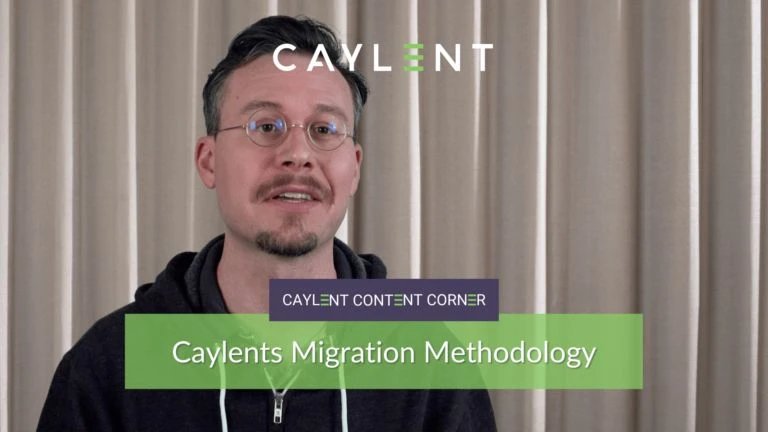
Caylent Services
AWS Foundations & Migrations
From rehosting to replatforming to rearchitecting, Caylent will help you leverage AWS to its fullest potential to meet your business objectives.
Learn about the benefits of modernizing during your AWS migration to unlock cloud native features for your applications and workloads.

A migration is moving any set of resources or software, applications, server workloads to any other place. So typically when we talk about migrations, we're talking about either a migration from on-premise, which is in a data center maybe using colocation, into the AWS cloud. It can be moving from other clouds to AWS. it can be moving data on its own, it could be IoT data, it could be data lakes, it could be just vast EBS volumes that you're moving to AWS, whatever it takes to get you there is what comprises a migration. Once you're in AWS obviously modernizing your workload, taking advantage of all the systems that are in AWS opens up a wealth of possibilities.
Our cloud migration and modernization practice is really about helping our customers take advantage of the features that are available in the cloud and focusing on a cloud native approach using their existing application architecture. So it's sort of bridging the gap between these two worlds. It's slightly more complicated because it's typically running software or programs that are based on non cloud native design decisions. What Caylent can do as part of that modernization effort is take what they have already, figure out how to tweak it, change it, make it more cloud native, and then help move it into the AWS cloud using those new paradigms.
As you migrate you need to be taking advantage of these new features. One of the things that helps us down that path is automating some of those migration strategies. Instead of just picking up every server that you have in your data center and just shoveling it into the cloud, which really just means you're using the cloud as another data center. What we want to do is transform it as it's moving over into the cloud so that you get to take advantage of serverless and containers, without having to completely redesign your application.
Modernizing your workload as you migrate to AWS is going to give you the most success. Taking advantage of AWS services like Amazon RDS, Elastic Load Balancing, might seem simple, but they really make moving to and taking advantage of AWS that much easier by unlocking cost efficiencies and increasing velocity as you deploy your workloads. Lift and shift exists, there are reasons to use it, but you're typically bringing along technical debt. The mistakes that you've made in the past, the workarounds that you've had to make in your data center are brought with you in a lift and shift migration. Alternatively, with Caylent’s approach of modernizing during your migration, we're setting you up for future success.
The way that Caylent really helps with migrations is first understanding the business outcome you are driving towards:
When we look at migrations, we look at all the different ways to migrate and modernize your applications in the most cost effective way, but also in a way that actually gets the business outcome that you are looking to achieve. We take a “customer first” approach and that's the approach that Caylent likes to lead with.

For the last decade William Kray has been everything from SysAdmin, Cloud Engineer, Solution Architect, Writer-of-documentation-about-how-to-write-documentation, and is currently Director of Architecture and Engineering at Caylent. He spends his spare time driving around in his 1966 Mini Cooper with his wife and their wiener dog.
View William's articles
Having spent over 10 years creating on AWS with a variety of startups, Ross brings real-world experience to help clients envision and design solutions on AWS. As a Director of Customer Solutions Architecture, he loves sharing his passion for AWS with our clients, and relishes the tough technical challenges they are looking to solve. When not exploring new AWS services or working on client solutions, Ross loves to lose himself in huge Lego sets, or disappearing into the mist-filled Pacific Northwest forests around his home.
View Ross's articles


Discover how we helped a public health data provider migrate to AWS to drive sales growth and strengthen regulatory compliance.

Discover how we helped a global fitness center migrate a business‑critical online enrollment application to AWS for improved stability and reliability.

Learn how small and medium businesses seeking faster, more predictable paths to AWS adoption can leverage Caylent's SMB Migration Quick Start to overcome resource constraints, reduce risk, and achieve cloud readiness in as little as seven weeks.